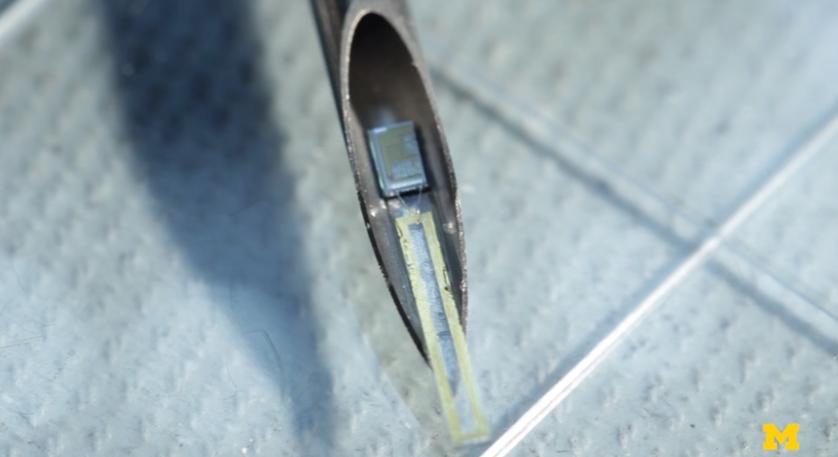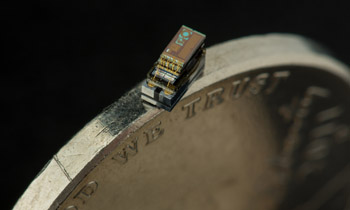Injectable computers can broadcast from inside the body
This platform has enabled a variety of sensors that can fit inside the human body, made possible by several breakthroughs in ultra-low power computing.
Profs. David Blaauw and David Wenzloff are designing millimeter-scale ultra-low-power sensing systems that can be injected into the body through a syringe. Unlike other radios of this size, these new devices are able to broadcast through the human body to an external receiver.
This device came from a group of researchers in the Michigan Integrated Circuits Lab responsible for the Michigan Micro Mote(M3), currently the world’s smallest computer. This platform has enabled a variety of sensors that can fit inside the human body, made possible by several breakthroughs in ultra-low power computing.
Once a device is implanted in the body, its ultimate usefulness depends not only on its ability to assess essential information, but to transmit that data to someone who can act on it. A typical radio would need an antenna larger than the M3 to transmit more than a few centimeters, and more power than could be generated from the tiny battery alone.
Thanks to a novel approach to antenna design, the computer was able to send radio signals 50 centimeters (or nearly 20 inches) away – which is easily sufficient to reach a receiver outside the body. To achieve the burst of power needed to transmit the data, the team integrated a capacitor into the device that is able to gradually build up a sufficient amount of power from the tiny battery before passing it along to the antenna, enabling data transmission in periodic bursts.
This research was presented recently at the Int. Solid-State Circuits Conference (ISSCC). The team is collaborating with researchers at the medical school to test the device.

 Enlarge
Enlarge
More Information
Read the paper, “A 10mm3 Syringe-Implantable Near-Field Radio System on Glass Substrate.”
By Yao Shi, Myungjoon Choi, Ziyun Li, Gyouho Kim, Zhiyoong Foo, Hun-Seok Kim, David Wentzloff, and David Blaauw

 Enlarge
Enlarge
Read about related research involving the Michigan Micro Mote (M3)
In the News
BioSpace: “Wireless Injectable Computer Could Deliver More Accurate Reading Of Tumor Pressure, University of Michigan Study” (6/17/16)
The Engineer: “Video of the week: Injectable radio broadcasts through flesh in real-time” (6/16/16)
Med City News: “Wireless injectable computer could deliver more accurate reading of tumor pressure” (6/17/16)
IEEE Spectrum: “Injectable Radios to Broadcast From Inside the Body” (2/8/2016)
Digital Trends: “This tiny new radio module can wirelessly broadcast data from inside the human body” (2/19/2016)
SEMI Startup: “U-M researchers are developing injectable radios” (2/12/2016)
In the Media
Teeny-Tiny Bluetooth Transmitter Runs on Less Than 1 Milliwatt
Bluetooth low-energy data packets can now be sent by millimeter-size IoT motes
Michigan is making tech tiny … very tiny
David Blaauw explains the newest and smallest dust-sized computing system developed by a team of electrical and computer engineers.
 MENU
MENU 
